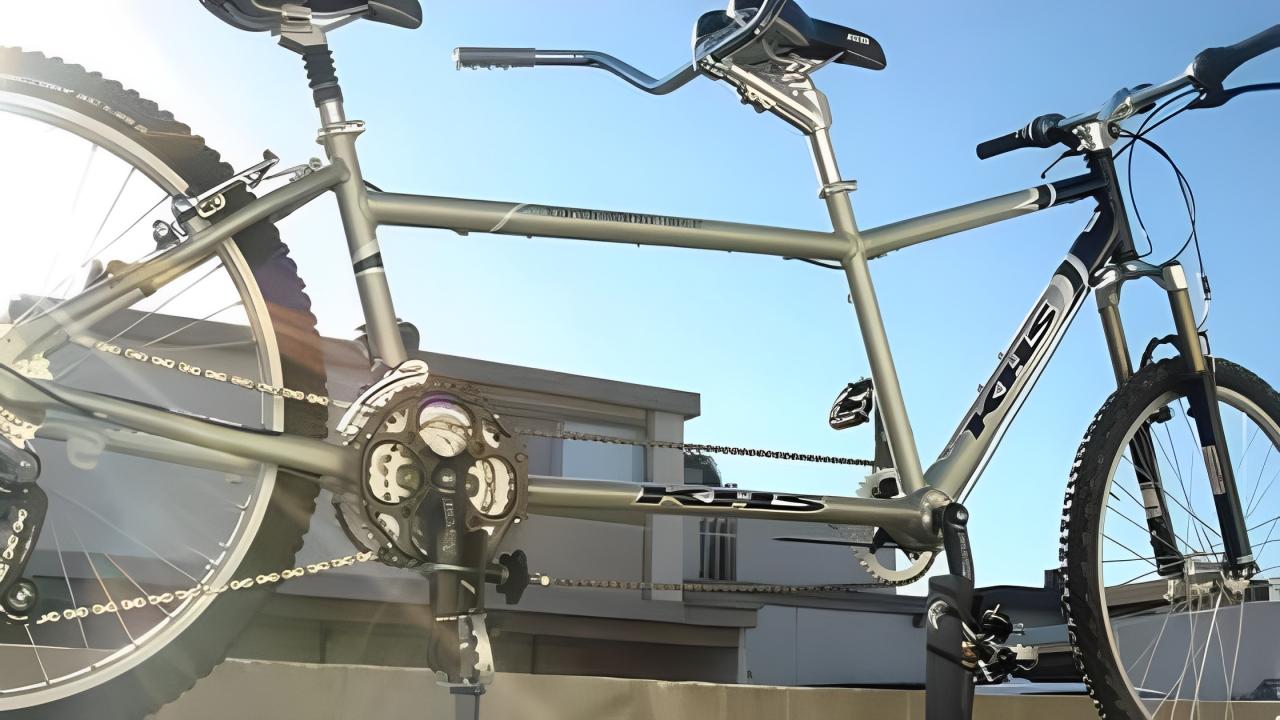Notifications

5 minutes, 17 seconds
-35 Views 0 Comments 0 Likes 0 Reviews

Tandem biking is all about shared fun, adventure, and connection. But when it comes to transporting that longer-than-average ride, things get a little tricky. You might be wondering if your regular bike rack can do the job—or if it’s time to invest in a tandem bike carrier designed for the task.
Let’s break it down and see what works, what doesn’t, and when it’s time to upgrade.
At first glance, it might seem like a regular bike rack should handle your tandem bike. After all, it’s just a longer version of a regular bike, right? Not quite.
Here are a few reasons standard racks usually won’t cut it:
Length issues: Tandem bikes are typically 6–8 feet long, while standard racks are made for much shorter frames. This can create balance problems and cause your bike to stick out dangerously.
Weight problems: Tandems are heavier than solo bikes. Most regular racks aren't built to support that kind of load. Overloading them can lead to damage or even a rack failure.
Mounting mismatch: Many standard racks hold bikes by the frame or wheels. Tandem frames are longer and sometimes have different geometry, which may not sit properly on a typical rack.
Safety concerns: Trying to force a tandem bike onto a standard rack can be unsafe for you, your bike, and others on the road. You risk scratches, wobbles, and even losing the bike mid-drive.
This is where a dedicated tandem bike rack or tandem bike carrier becomes essential. These are purpose-built to handle everything a tandem bike throws at them—extra length, weight, and all.
Extended design: Tandem racks are longer and built with the right spacing to balance your bike properly during transport.
Heavy-duty support: These racks are reinforced to handle the extra weight, keeping your tandem stable, even on bumpy roads.
Secure attachments: Tandem racks usually come with multiple anchor points and cradles that keep the bike secured in place without damaging the frame.
Vehicle compatibility: Many tandem racks are designed for cars, SUVs, and even trucks. They often mount via hitch systems, which offer the most secure setup.
If you’re serious about tandem biking—or even if you just use it for weekend rides—upgrading to a tandem-specific solution is a smart move. Consider switching to a tandem bike carrier when:
You’ve struggled to make your tandem fit on a regular rack
Your current setup feels unstable or unsafe
You’re planning longer road trips with your tandem
You want peace of mind knowing your bike is fully secured
Think of it this way: You’ve invested in a quality tandem bike. Why risk damaging it with the wrong transport setup?
Once you’ve got the right gear, follow a few simple tips to make every trip smooth and safe:
Double-check all straps and mounts before driving off
Use frame protectors or padding to avoid scratches
Drive cautiously and give yourself extra clearance space
Watch for low overhangs or tight corners—tandems stick out further
Trying to fit a tandem bike onto a regular rack is like cramming a king-size mattress into a twin-size frame—it just doesn’t work. A tandem bike rack or tandem bike carrier is the best way to transport your ride safely, especially if you're planning regular trips to the trails, coastlines, or parks.
When you’ve got the right rack, every ride begins stress-free—and ends with awesome memories.

